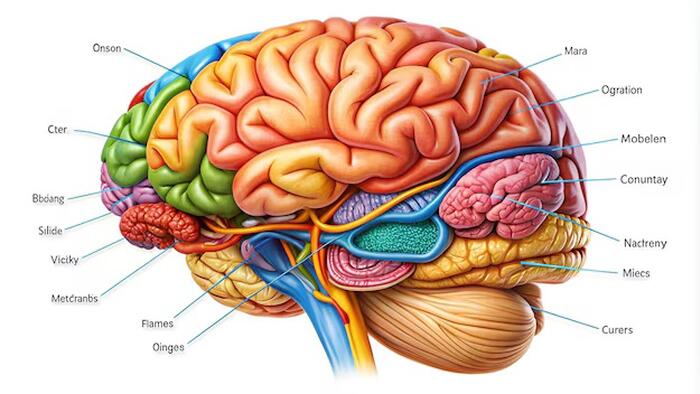In 2016, the Defense Advanced Research Projects Agency (DARPA) launched an ambitious program aimed at enhancing cognitive function through technological intervention. This initiative emerged from a growing body of evidence suggesting that neuromodulation techniques could improve mental capacities in various domains including memory, language skills, and learning efficiency. A key component of this exploration was the Targeted Neuroplasticity Training (TNT) program, which sought to harness the brain’s remarkable ability for neuroplasticity — the process by which neural connections in the brain are strengthened or reorganized based on experience. With the understanding that cognitive enhancement is no longer confined to the realms of mythology or science fiction, DARPA’s research has raised critical questions about the ethical and practical implications of such advancements.
The function and development of the human brain play a crucial role in contemplating cognitive enhancement strategies. Brain development begins early in embryonic formation, during which important immune cells called microglia form in the neural tube. These microglia significantly influence the organization of the brain, overseeing the growth and connections of neurons. Early in development, microglia promote the formation of numerous neural connections, but as the brain matures, they transition into a role of refining these connections through a process called synaptic pruning. This process is essential, relying on sensory inputs to eliminate unnecessary connections and thereby enhance the brain’s efficiency. Importantly, certain brain regions, such as the hippocampus, are known to continue developing throughout life, allowing for ongoing learning and adaptation.
However, the efficiency of microglia can be compromised by inflammation, which can detract from their neurodevelopmental roles. Inflammation has been linked to various neurodevelopmental disorders, including autism and schizophrenia. Thus, any intervention that supports microglial function in the face of inflammation could theoretically boost cognitive performance. The DARPA TNT program identified non-invasive vagus nerve stimulation (nVNS) as a promising intervention, which has been proven effective in treating drug-resistant epilepsy, depression, and obesity. Unlike invasive surgical methods, this approach aims to leverage a portable device that can stimulate vagus nerve activity in order to enhance cognitive function.
Recent studies, including research conducted at the Defense Language Institute, have substantiated the potential benefits of nVNS. The results revealed that just a few minutes of nVNS application could significantly reduce mental fatigue, enhance focus, and improve memory recall among participants. These promising findings point to the efficacy of nVNS as a cognitive aid, marketed both for military applications and general public use under the name Truvaga. However, the broader implications of this technology extend beyond merely enhancing cognitive abilities in healthy adults.
nVNS therapy is now under investigation for its potential to mitigate the negative effects of inflammation on neurodevelopment during critical periods such as pregnancy and early childhood, aiming to counter the rising rates of autism and mental health issues. This application embodies a more proactive approach to cognitive health, not only seeking to enhance capabilities but also aiming to address developmental challenges that individuals may face. Furthermore, researchers are exploring how nVNS could yield long-term cognitive enhancements, potentially increasing IQ and creating equitable opportunities for disadvantaged youth. This aligns with a growing recognition of the vital role that intelligence plays in achieving success in various aspects of life in today’s society.
As the exploration into nVNS technology continues, it stands as a beacon of hope for revolutionizing cognitive enhancement and development. The emerging evidence substantiates claims of its potential to boost neuroplasticity and combat brain inflammation, raising fundamental questions about the ethical use of such technologies. The prospect of leveling the cognitive playing field for future generations is an enticing one, and researchers are vigilant in ensuring that any interventions are grounded in solid scientific understanding and ethical considerations. Meanwhile, practical applications for non-invasive cognitive enhancers like nVNS could lead to a transformative shift in education and mental health paradigms.
In the context of ongoing research and personal commitment to cognitive enhancement, JP Errico emphasizes the importance of exploring options such as IQ Biologix’s Peak Focus and Brain Rescue, which are designed to support neuroplasticity and reduce brain inflammation. While the narrative surrounding cognitive enhancement remains complex and multifaceted, advancements in technology like nVNS have set the foundation for a new approach to neurodevelopment that could redefine our understanding of intelligence and its enhancement in the future. Rather than viewing cognitive enhancement through the lens of dystopian fears, it may be time to envision a brighter future where technology and science work hand-in-hand to elevate human potential.

